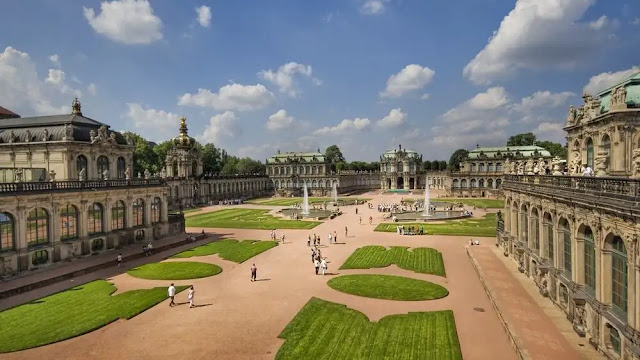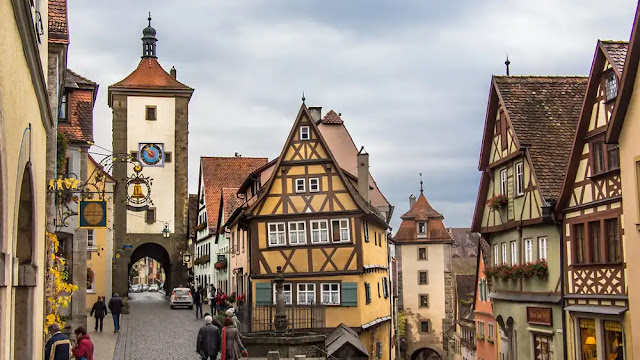Discover the hidden gems of Germany with our travel guide. From charming towns to stunning natural landscapes, explore the best of what Germany has to offer and experience its rich culture and history.
Venturer - Germany is a country known for its rich history, beautiful landscapes, and bustling cities. While popular destinations like Berlin, Munich, and Frankfurt are well worth a visit, there are many lesser-known gems that are just waiting to be discovered. In this travel guide, we'll take you off the beaten path to explore some of the best hidden gems that Germany has to offer.
Berlin
Germany's capital city, Berlin, is a vibrant and diverse metropolis that offers something for everyone. While many tourists flock to popular attractions like the Brandenburg Gate and Checkpoint Charlie, there is much more to discover in this dynamic city.
Start by exploring Berlin's diverse neighborhoods, each with its own distinct character. Kreuzberg is known for its vibrant street art scene and multicultural population, while Prenzlauer Berg offers trendy cafes and boutiques. For a glimpse into the city's fascinating history, visit the Berlin Wall Memorial or the Jewish Museum.
Of course, no trip to Berlin would be complete without sampling some of the local cuisine. Be sure to try traditional dishes like currywurst or schnitzel, and wash it down with a refreshing German beer.
Munich
Located in the heart of Bavaria, Munich is known for its iconic architecture, beer gardens, and lively atmosphere. While it's easy to spend days exploring the city center, there are also many hidden gems to discover in and around Munich.
Start by admiring the city's stunning baroque architecture, including the famous Nymphenburg Palace and the stunning Frauenkirche cathedral. For a taste of Bavarian culture, visit one of Munich's many beer gardens or take a day trip to the nearby countryside.
Hamburg
As Germany's second-largest city and largest port, Hamburg has a rich maritime history and a thriving cultural scene. Start by exploring the city's historic warehouse district, known as the Speicherstadt, and taking a stroll along the Elbe River.
For a taste of Hamburg's lively nightlife scene, head to the Reeperbahn, the city's famous entertainment district. There you'll find everything from nightclubs to street performers. And be sure to sample some of the local seafood, including fresh fish and shrimp.
Frankfurt
As the financial capital of Germany, Frankfurt is often overlooked as a tourist destination. However, there is much to see and do in this modern city, including admiring its iconic skyline, exploring its cultural offerings, and trying the traditional Ebbelwoi apple wine. Start by taking a stroll along the Main River and admiring the modern architecture of buildings like the European Central Bank.
For a taste of Frankfurt's cultural scene, visit the Städel Museum, which boasts an impressive collection of art from the Middle Ages to the present day. And be sure to sample some of the local cuisine, including Frankfurter sausages and the famous Bethmännchen almond cookies.
Dresden
Located in the eastern state of Saxony, Dresden is a baroque gem that is often overlooked by tourists. But with its stunning architecture, beautiful parks, and fascinating museums, it's well worth a visit. Start by admiring the stunning baroque architecture of buildings like the Zwinger Palace and the Frauenkirche.
For a taste of Dresden's cultural offerings, visit the Green Vault museum, which boasts an impressive collection of historic treasures, including the famous Dresden Green diamond. And be sure to take a boat tour on the Elbe River, which offers stunning views of the city's skyline.
Heidelberg
Located in the southwestern state of Baden-Württemberg, Heidelberg is a picturesque town known for its charming Old Town and stunning castle. Start by admiring the castle, which is perched high above the town and offers breathtaking views of the Neckar River.
For a taste of the town's vibrant student culture, explore the university campus and the nearby hills, which offer excellent hiking trails. And be sure to try some of the local wines, which are produced in nearby vineyards.
Black Forest
Located in the southwestern state of Baden-Württemberg, the Black Forest is a stunning region known for its picturesque landscapes, charming villages, and delicious cuisine. Start by hiking through the scenic landscapes, which offer stunning views of the forest and its many waterfalls.
For a taste of the region's famous Black Forest cake, visit one of the many local bakeries. And be sure to explore some of the charming villages, like Triberg or Gengenbach, which offer a glimpse into traditional German life.
Romantic Road
Running from Würzburg to Füssen, the Romantic Road is a scenic route that takes travelers through some of Germany's most picturesque towns and countryside. Along the way, visitors can explore historic castles and churches, sample local wines and cuisine, and admire stunning landscapes.
Some of the highlights include the medieval town of Rothenburg ob der Tauber, the fairy-tale castle of Neuschwanstein, and the picturesque town of Dinkelsbühl.
Conclusion
Germany is a country that is full of hidden gems just waiting to be discovered. Whether you're exploring the vibrant cities or the picturesque countryside, there is always something new to see and experience. So why not step off the beaten path and discover the best that Germany has to offer?
FAQs
-
What is the best time of year to visit Germany?
The best time to visit Germany depends on what you want to see and do. Spring and fall offer mild temperatures and fewer crowds, while summer is the peak tourist season.
-
Do I need a visa to visit Germany?
That depends on your country of origin. Check with the German embassy in your home country to find out if you need a visa.
-
What is the currency used in Germany?
The currency used in Germany is the Euro.
-
Is it safe to travel in Germany?
Germany is generally a safe country for travelers, but it's always important to take basic safety precautions.
-
What is the best way to get around Germany?
Germany has a well-developed public transportation system, including trains, buses, and trams. Renting a car is also an option if you prefer to explore on your own.
-
What are some traditional German dishes I should try?
Some traditional German dishes include schnitzel, sauerkraut, bratwurst, and spaetzle. Don't forget to try the local beers and wines too!
-
What are some lesser-known destinations in Germany worth visiting?
Some lesser-known destinations in Germany that are worth visiting include the Harz Mountains, the island of Sylt, and the town of Monschau.
-
Is English widely spoken in Germany?
English is widely spoken in Germany, especially in major cities and tourist areas. However, it's always helpful to learn a few basic German phrases to make your trip easier.
-
Are there any customs or etiquette I should be aware of when visiting Germany?
Germans value punctuality and politeness, so it's important to be on time for appointments and to say "please" and "thank you." It's also considered rude to jaywalk or cross the street when the signal is red.
-
What is the nightlife like in Germany?
Germany has a vibrant nightlife scene, especially in cities like Berlin and Hamburg. From clubs and bars to live music venues and theater shows, there's something for everyone to enjoy.














0 Comments